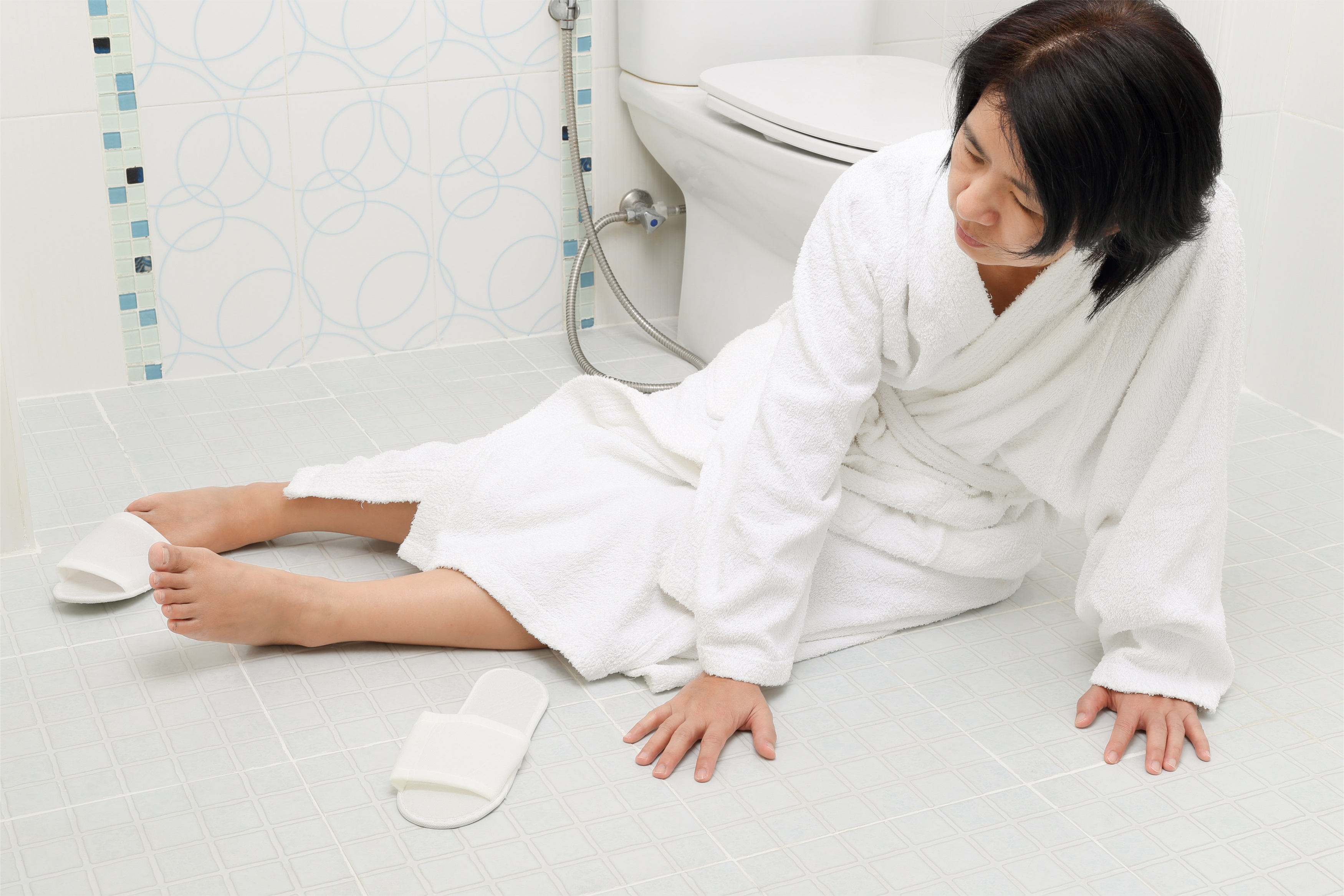Medical Malpractice Reader: Falls in the Hospital

Medical Malpractice Reader: Falls in the Hospital
Introduction
The Agency for Healthcare Research and Quality (AHRQ) states that there are between 700,000 and 1,000,000 falls every year in hospitals. Patients may fall from a bed or chair, on a slippery floor, during transfer from the bed to a bedside commode, when ambulating too soon after illness or surgery, or during unassisted toileting or showering.
A fall can result in lacerations, fractures, internal bleeding, head trauma, or even death. The Agency states that it may be possible to decrease the rate of falls by 30%. This can be accomplished by facility implementation of tools and processes to prevent falls
Confusion, medications, lack of coordination, and a weakened condition all increase the risk for and can cause falls. Additional factors to consider when evaluating patient falls include the presence of bandages or casts, intravenous tubing, foley catheters, and monitor wires and electrodes.
Fall risk identification
One of the first measures that may be used to prevent falls is to identify the patient risk for falls. The most commonly used screening tool is the Morse Fall Scale. The screening tool rates the fall risk from a series of questions on history of falls, presence of a secondary diagnosis, use of ambulatory aids such as cane or crutches, presence of intravenous tubing, gait and mental status. Scores of 0-24 indicate a low risk for falls, 45-55 medium risk for falls, and greater than 55 a high risk for falls. (Note: Scoring levels may be different in different facilities.) A medium to high risk of falls would warrant institution of measurements to reduce or prevent falls. It is important to note, though, that some patients at a low risk of falls will fall and patients at high risk for a fall may not fall at all.
There are also other screening tools to identify patient risk for fall. These include the Medication Risk Fall scale, the Stratify Falls Risk Assessment Tool, Orthostatic vital signs, and the Delirium Evaluation Bundle. Many other health care agencies or facilities have developed their own screening tools for assessment of falls risk.
Other methods of identifying a patient at risk for falls are simply staff observations of the patient with regard to impaired mobility, cognition, and overall functioning.
Five Most Common Causes of Falls:
- Patient does not call for help
- Bed Exit Alarm was not turned on
- Medications that cause side affects
- Staff did not recognize patient was at risk for falls
- Delayed response to nurse call bell
ACTIONS: To prevent falls
Identification of patients who are at risk for falls would be pointless without planned interventions to prevent falls.
Standard falls prevention measures include keeping the bed in low position with the bed rails up and having the call bell in reach. Additional measures may include placing a “High Risk for Falls” sticker on the chart, on the patient’s door, in the room, and on a patient wrist band to alert all hospital staff of the need to closely monitor the patient. Confused or delirious patients may require a bed alarm or even restraints. Staff may also perform more frequent rounds and ensure that the patient is positioned comfortably, has all needed possessions within reach, and that toileting needs are addressed in a timely fashion. The patient should be provided with skid free socks or slippers and hospital gowns should be fitted so as not to pose a risk for tripping.
Hospital staff should also maintain the general environment to prevent an increased risk for falls: spills should be wiped up immediately, there should be adequate lighting, all hospital furniture should be sturdy and in good repair, grab bars should be present near in the bathroom, and IV poles should be sturdy with IV tubing out of the way during ambulation.
What to look for in the medical and facility records:
- All screening tools to assess fall risk completed for the individual patient
- Nursing flow sheets documenting implementation of falls risk prevention actions
- Nursing flow sheets documenting patient assessments and nursing rounds
- Certified Nursing Assistant (CNA) flow sheets documenting patient rounds
- Documentation regarding restraints
- Physical therapy and/or respiratory therapy entries regarding patient condition at or near the time of the fall
- Staff entries regarding patient compliance with medical directives
- Policies and Procedures Manuals of the individual facility with regard to fall prevention programs
- Incident reports regarding falls:
- If the fall was not witnessed, look at  documentation regarding position the patient was found in at the time of the fall
- Documentation regarding staff to patient ratio at the time of the fall
- Maintenance documentation regarding upkeep of patient rooms
In summary, falls are, unfortunately, a common cause of injury and prolonged hospital stays among patients. A careful review of the above noted medical records can assist the attorney to evaluate each individual case that is brought into his office.
References:
https://www.ahrq.gov/professionals/systems/hospital/fallpxtoolkit/index.html
http://www.strategiesfornursemanagers.com/content-print.cfm?content_id=212189
https://www.healthworkscollective.com/5-major-causes-patient-falls/
http://www.moorebalancebrace.com/docs/8390_MBB_MorseEval3-1,final.pdf
http://www.medscape.com/viewarticle/579951_3